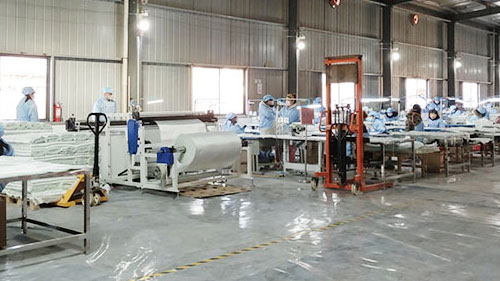Welding Blanket Materials: Which Type Is Best for Your Project?
Overview:Explore welding blanket materials: Fiberglass, Silicone-Coated Fiberglass, Leather & Aramid. Compare heat resistance, durability, flexibility & costs to choose the best type.
Choosing the right welding blanket is crucial for safety and efficiency. The material directly impacts its heat resistance, durability, flexibility, and protection level. Here are the primary welding blanket materials used:
Fiberglass:
The Most Common: Affordable and widely available.
Pros: Excellent heat resistance (typically up to 1000°F / 537°C, some higher grades to 1800°F / 982°C), good spark and slag resistance, naturally non-combustible.
Cons: Can be stiff and less flexible, fibers can be irritating to skin/lungs (proper handling required), less resistant to punctures or molten metal penetration than some materials. Often coated (e.g., with silicone) for added durability and reduced fiber shedding.
Best For: General welding, grinding, cutting; protection from sparks and moderate heat splash.

( Silicone/PU/PVC) Coated Fiberglass:
Enhanced Fiberglass: Standard fiberglass fabric coated with silicone/pu/PVC rubber.
Pros: Significantly improves flexibility and conformability compared to plain fiberglass. Creates a smoother, more durable, water-resistant, and less porous surface that resists molten metal stick and penetration better. Greatly reduces irritating fiber shedding. High heat resistance (similar to uncoated grades).
Cons: More expensive than plain fiberglass.
Best For: Applications requiring flexibility (covering complex shapes), better molten metal resistance, reduced fiber hazard, and increased durability. Very popular choice.
Leather (Split Leather/Hide):
Traditional & Tough: One of the oldest materials used.
Pros: Exceptional resistance to sparks, spatter, abrasion, and punctures. Offers good insulation from radiant heat. Highly durable and long-lasting if maintained.
Cons: Heavy, stiff (less flexible), expensive, requires conditioning to prevent drying/cracking, lower continuous heat resistance than fiberglass (can char if overheated). Not ideal for blocking intense radiant heat over long periods.
Best For: Heavy-duty applications like foundries, heavy welding with lots of large sparks/spatter, protection against abrasion (e.g., on workbenches).
Aramid Fiber:
High-Performance Synthetic: Known for incredible strength.
Pros: Excellent heat resistance (similar or superior to fiberglass), outstanding strength and cut/puncture resistance, lighter weight than leather or heavy fiberglass, inherently flame-resistant.
Cons: Significantly more expensive than fiberglass or silicone-coated fiberglass. Can degrade under prolonged exposure to strong UV light. Performance can decrease when wet.
Best For: High-heat applications demanding superior mechanical strength and puncture resistance, situations where weight is a factor. Often used in specialized or high-end blankets.

Choosing the Right Material:
General Purpose/Value: Standard or Silicone-Coated Fiberglass (best balance).
Flexibility/Molten Metal: Silicone-Coated Fiberglass.
Heavy Sparks/Abrasion: Leather.
Max Strength/Lightweight/High Heat: Aramid Fiber (if budget allows).
Always check the manufacturer's specifications for the specific blanket's maximum continuous and peak temperature ratings, along with its intended uses and limitations. Prioritize safety by selecting a blanket rated for the temperatures and hazards present in your work environment!
Product link:soldering fire blanket&welding fire blanket /roll





